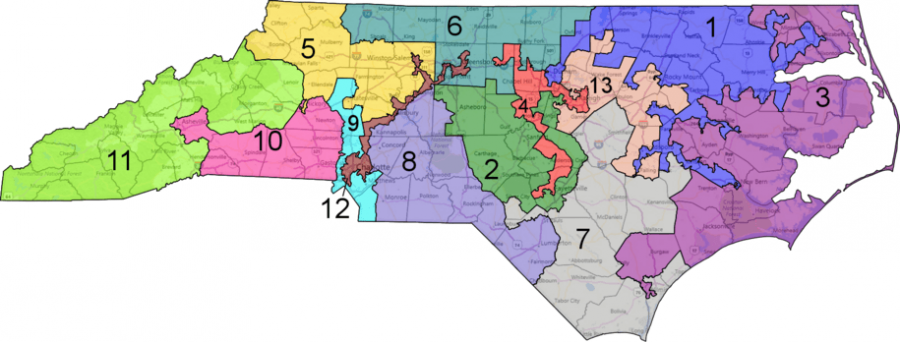Gerrymandering in North Carolina
November 22, 2019
North Carolina is one of the most gerrymandered states in the country, and with the upcoming presidential election, the North Carolina state legislature is under pressure to draw its district boundaries and get them approved.
According to Dictionary.com, to gerrymandering is “the dividing of a state, county, etc., into election districts so as to give one political party a majority in many districts while concentrating the voting strength of the other party into as few districts as possible”. While gerrymandering is legal, racial gerrymandering is not. Racial gerrymandering, according to Vox.com, is when districts are drawn to ensure that a single race does not have enough voting power in any district to elect any representatives. Britannica.com states, “The term is derived from the name of Governor Elbridge Gerry of Massachusetts, whose administration enacted a law in 1812 defining new state senatorial districts. The law consolidated the Federalist Party vote in a few districts and thus gave disproportionate representation to Democratic-Republicans.” The term gerrymander became transfixed in the public’s minds when journalist Elkanah Tisdale published a satirical cartoon in the Boston Gazette that depicted one of Gerry’s irregularly shaped districts as a salamander called the “Gerry-mander.”
North Carolina Republicans were forced to go back to the drawing board again after their congressional district map was scrapped by a court for illegal gerrymandering. This is the third map to be turned down since the 2010 census, and with the 2020 census just around the corner, the new district map will not be used for long. New, fairer boundaries would give the Democrats a boost, and ensure that they won at least two seats. However, if the pattern of redrawing and scrapping maps continues, legislators will have to redraw the district boundaries in public hearings with screens visible to the public to ensure transparency.
Despite its deep impact on North Carolina, many Green Level students do not know what it is. Of the people we interviewed, only 25% of them knew what gerrymandering is, and 75% of our interviewees said, “I don’t know.” Despite North Carolina being gerrymandered legally and illegally for years, many residents do not understand gerrymandering. Maybe it’s time we learned.








